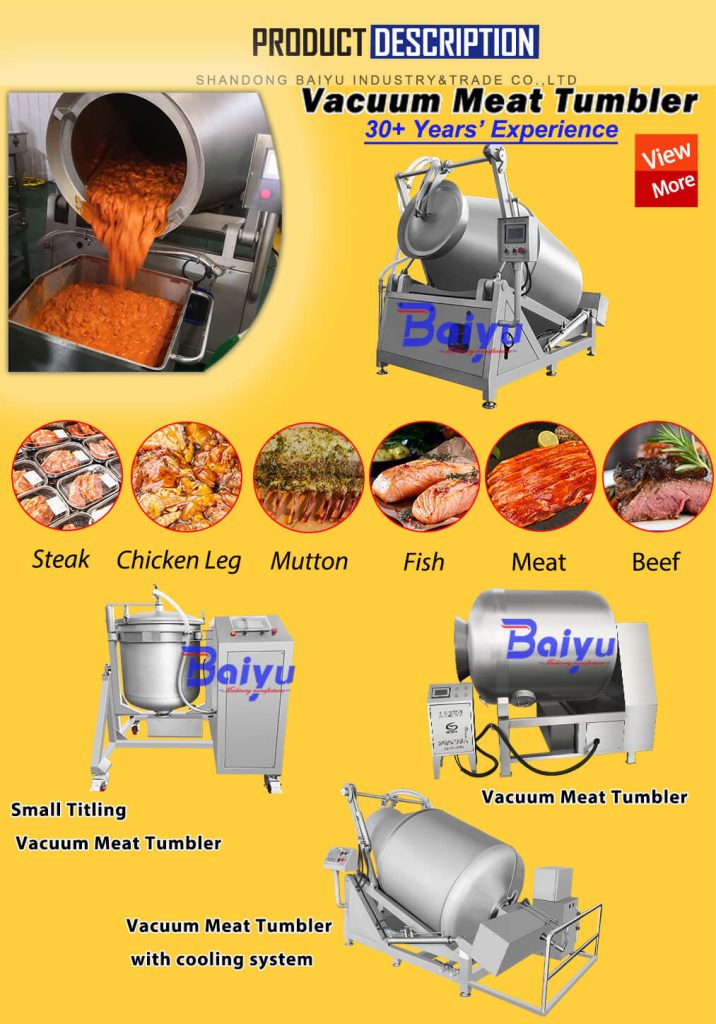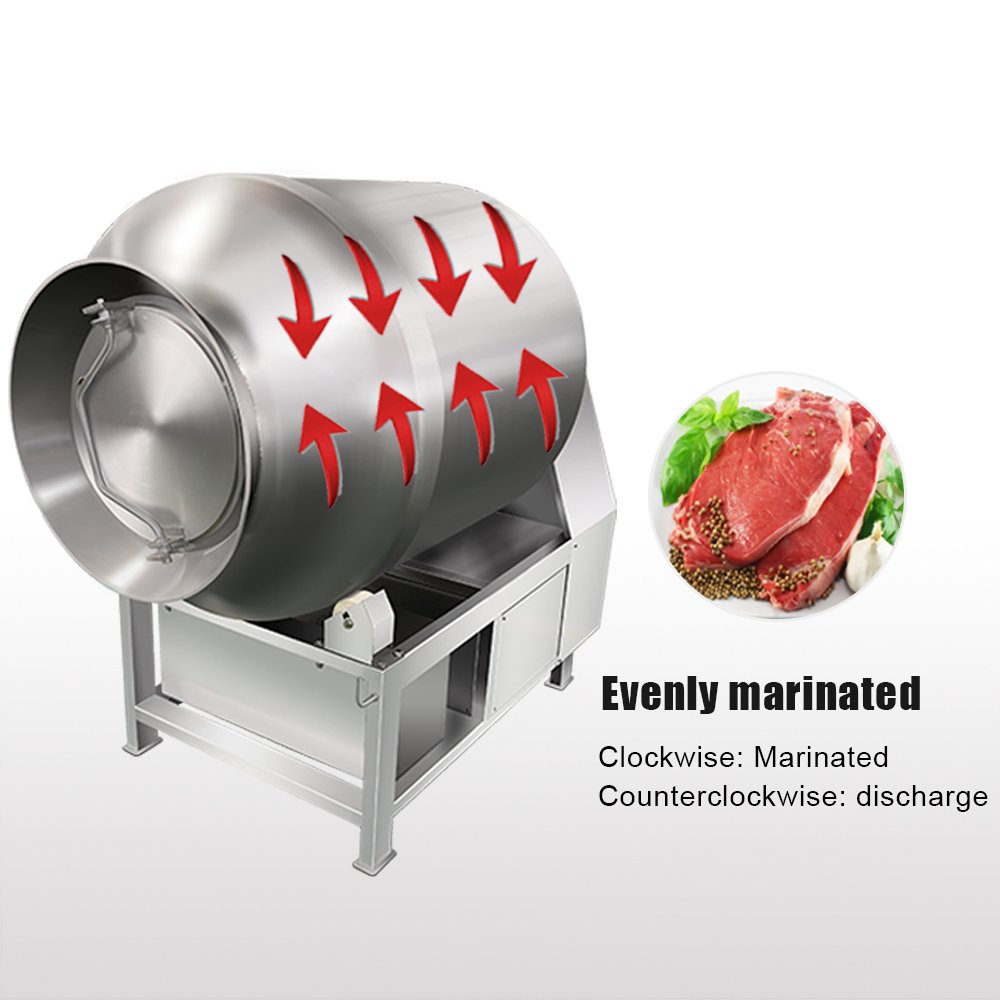10 years of experience as a food machinery equipment manufacturer
10 years of experience as a food machinery equipment manufacturer
The culinary world is constantly evolving, with new techniques and equipment emerging to enhance the art and science of cooking. Among these innovations, the marinating tumbler vacuum has garnered attention for its potential to revolutionize how flavors are infused into foods, particularly meats, poultry, and fish. This device combines the principles of vacuum technology with mechanical tumbling to achieve results that traditional marination methods often struggle to match in terms of speed, depth, and consistency of flavor penetration.

Understanding the marinating tumbler vacuum requires a brief look at the science it employs. Traditional marination relies on soaking food in a seasoned liquid, allowing the marinade to slowly diffuse into the food’s tissues over several hours, or even days. The process can be somewhat inefficient, with much of the flavor remaining on the surface.
Vacuum technology introduces a significant change to this dynamic. When a vacuum is created within the tumbler’s chamber, air is removed not only from the chamber itself but also from the pores and intercellular spaces of the food. This has a twofold effect. Firstly, the removal of air reduces the physical barrier that marinade molecules encounter when trying to penetrate the food. Secondly, the lower pressure environment can cause the food’s cellular structure to expand slightly, effectively opening up pathways for the marinade. When the vacuum is released, or as the tumbling process continues under vacuum, the atmospheric pressure helps to drive the marinade more deeply into the food.
The tumbling action is the other crucial component. A marinating tumbler vacuum typically features a rotating drum. As the drum rotates, the food items are gently lifted and dropped, ensuring that all surfaces are consistently exposed to the marinade. This mechanical action also contributes to tenderization, as the gentle massaging can help to break down tougher muscle fibers. Unlike static marination where food items may rest unevenly, tumbling ensures a uniform coating and absorption.
The application of this technology offers several notable advantages for both professional chefs and home cooking enthusiasts aiming for superior results.
Operating a marinating tumbler vacuum is generally straightforward. The food and marinade are placed into the drum, the lid is secured to create an airtight seal, and a vacuum pump (either integrated or external) removes the air. Once the desired vacuum level is achieved, the tumbling motor is activated for a pre-set duration. Many models offer programmable controls for vacuum levels, tumbling speed, and duration, allowing for precise customization based on the food being prepared.
When selecting or using such a device, capacity is an important factor. Models range from small countertop units suitable for home kitchens to larger, industrial-sized machines for commercial food processing. The material of the drum, typically stainless steel or food-grade plastic, is also a consideration for durability and ease of cleaning. Proper cleaning and maintenance are essential to ensure food safety and the longevity of the equipment.
Traditional marination, often involving placing food in a bag or dish with marinade and refrigerating it, has been a culinary staple for centuries. While effective to a degree, it has limitations. Flavor penetration is often slow and surface-deep. Achieving even marination requires manual turning or agitation of the food. There’s also a higher risk of uneven results if some pieces are more submerged or exposed than others.
The marinating tumbler vacuum addresses these shortcomings directly. The vacuum accelerates absorption, while tumbling ensures uniformity. This doesn’t render traditional methods obsolete, as they are simple and require no special equipment. However, for those seeking enhanced flavor, improved texture, and significantly reduced preparation times, the vacuum tumbler offers a distinct technological advantage.
The advent of accessible marinating tumbler vacuums has implications beyond just convenience. It empowers chefs and home cooks to experiment more boldly with flavors, knowing that they can achieve deep infusion relatively quickly. This can lead to more complex and nuanced dishes. For commercial operations, such as restaurants or catering businesses, these devices can improve workflow efficiency, ensure product consistency, and potentially reduce food costs by optimizing marinade usage and tenderizing less expensive cuts of meat effectively.
Furthermore, the ability to control marination parameters precisely allows for greater reproducibility of recipes. This is particularly valuable in professional settings where consistency is paramount. For the home user, it means achieving restaurant-quality results with greater ease and predictability.

In conclusion, the marinating tumbler vacuum represents a significant advancement in food preparation technology. By synergistically combining vacuum pressure and mechanical tumbling, it offers a method to infuse foods with flavor and enhance tenderness more efficiently and effectively than traditional techniques. While it involves an investment in specialized equipment, the benefits in terms of time savings, flavor enhancement, improved texture, and consistency make it a compelling tool for anyone serious about elevating their culinary creations. Its utility spans from the ambitious home cook to the demanding professional kitchen, signaling a modern approach to one of cooking’s oldest preparatory steps.
